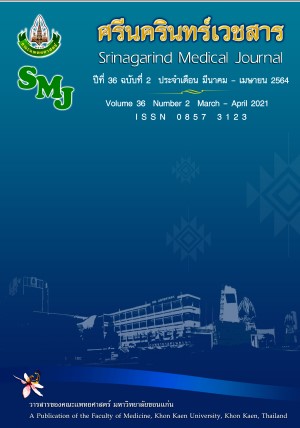Alternative Access Sites for Abdominal Entry in Gynecologic Laparoscopy: A Literature Review and Narrative Summary of Findings
Keywords:
Laparoscopic entry; Complications of laparoscopic entry; periumbilical adhesions; primary portAbstract
The periumbilical area is the typical site for initial abdominal entry during gynecologic laparoscopy. Placing a gas insufflation needle and primary trocar through the umbilicus, however, is deemed hazardous in cases in which there is a risk of peritoneal and visceral adhesions to the umbilical region. Common alternative sites for an abdominal entry during gynecologic laparoscopy are Palmer’s point, which is located in the left upper quadrant 3 cm below the costal margin in the midclavicular line, and the Lee-Huang point, which is located at the midline between the umbilicus and sternal xiphoid process. Available evidence has shown both of these points to be both feasible and safe as the initial entry site during gynecologic laparoscopy. Other alternative access sites include the subcostal margin in the midclavicular line and the left ninth or tenth intercostal space. Recently, new laparoscopic entry sites (i.e., Jain point and Latif’s point) have been proposed for cases in which there is suspected adhesion due to previous surgery. Further studies, however, are needed to verify the safety and feasibility of these entry techniques.
References
2. Frias Vilaça A, Reis AM, Vidal IM. The anatomical compartments and their connections as demonstrated by ectopic air. Insights Imaging 2013; 4(6): 759-772.
3. Gerner-Rasmussen J, Donatsky AM, Bjerrum F. The role of non-invasive imaging techniques in detecting intra-abdominal adhesions: a systematic review. Langenbecks Arch Surg 2019; 404(6): 653-661
4. Sepilian V, Ku L, Wong H, Liu CY, Phelps JY. Prevalence of infraumbilical adhesions in women with previous laparoscopy. JSLS 2007; 11(1): 41–44.
5. Audebert AJ, Gomel V. Role of microlaparoscopy in the diagnosis of peritoneal and visceral adhesions and in the prevention of bowel injury associated with blind trocar insertion. Fertil Steril 2000; 73(3): 631–635.
6. Ngu SF, Cheung VY, Pun TC. Left upper quadrant approach in gynecologic laparoscopic surgery. Acta Obstet Gynecol Scand 2011; 90(12): 1406-1409.
7. Kumakiri J, Takeuchi H, Sato Y, Kitade M, Kikuchi I, Shimanuki H, et al. A novel method of ninth-intercostal microlaparoscopic approach for patients with previous laparotomy. Acta Obstet Gynecol Scand 2006; 85(8): 977-981
8. Haddaway NR, Collins AM, Coughlin D, Kirk S. The Role of Google Scholar in Evidence Reviews and Its Applicability to Grey Literature Searching. PLoS One 2015; 10(9): e0138237.
9. Morrison A, Polisena J, Husereau D, Moulton K, Clark M, Fiander M, et al. The effect of English-language restriction on systematic review-based meta-analyses: a systematic review of empirical studies. Int J Technol Assess Health Care 2012; 28(2): 138-144
10. Thepsuwan J, Huang KG, Wilamarta M, Adlan AS, Manvelyan V, Lee CL. Principles of safe abdominal entry in laparoscopic gynecologic surgery. Gynecol Minimal Invasive Ther 2013; 2(4): 105-109.
11. Vilos GA, Ternamian A, Dempster J, Laberge PY. No. 193-Laparoscopic Entry: A Review of Techniques, Technologies, and Complications. J Obstet Gynaecol Can 2017; 39(7): e69-e84.
12. Taskforce for Abdominal Entry:. Principles of safe laparoscopic entry. Eur J Obstet Gynecol Reprod Biol 2016; 201: 179-188.
13. Krishnakumar S, Tambe P. Entry complications in laparoscopic surgery. J Gynecol Endosc Surg 2009; 1(1): 4-11.
14. Palmer R. Safety in laparoscopy. J Reprod Med 1974; 13(1): 1-5.
15. Granata M, Tsimpanakos I, Moeity F, Magos A. Are we underutilizing Palmer's point entry in gynecologic laparoscopy? Fertil Steril 2010; 94(7): 2716-2719.
16. Abd Ellatif ME, Ghnnam WM, Abbas A, Basheer M, Dawoud I, Ellaithy R. Latif's point: A new point for Veress needle insertion for pneumoperitoneum in difficult laparoscopy. Asian J Endosc Surg 2018;11(2):133-137.
17. Aust TR, Kayani SI, Rowlands DJ. Direct optical entry through Palmer’s point: a new technique for those at risk of entry-related trauma at laparoscopy. Gynecol Surg 2010; 7: 315–317.
18. McDanald DM, Levine RL, Pasic R. Left upper quadrant entry during gynecologic laparoscopy. Surg Laparosc Endosc Percutan Tech 2005; 15(6): 325-327.
19. Muppala H, Rafi J, Najia SK. Laparoscopic insufflation through a defined surgical point in the left upper quadrant: a 3-year experience. Gynecol Surg 2009; 6: 11–14.
20. Lam KW, Pun TC. Left upper quadrant approach in gynecologic laparoscopic surgery using reusable instruments. J Am Assoc Gynecol Laparosc 2002; 9(2): 199-203.
21. Agarwala N, Liu CY. Safe entry techniques during laparoscopy: left upper quadrant entry using the ninth intercostal space--a review of 918 procedures. J Minim Invasive Gynecol 2005; 12(1): 55-61.
22. Lee CL, Huang KG, Jain S, Wang CJ, Yen CF, Soong YK. A new portal for gynecologic laparoscopy. J Am Assoc Gynecol Laparosc 2001; 8(1): 147-150.
23. Huang KG, Lee CL, Tsai CS, Han CM, Hwang LL. A new approach for laparoscopic ovarian transposition before pelvic irradiation. Gynecol Oncol 2007; 105(1): 234-237.
24. Terzi H, Hasdemir PS, Biler A, Kale A, Sendag F. Evaluation of the surgical outcome and complications of total laparoscopic hysterectomy in patients with enlarged uteruses. Int J Surg 2016; 36(Pt A): 90-95.
25. Naval S, Naval R, Naval S, Rane J. Tips for Safe Laparoscopic Multiple Myomectomy. J Minim Invasive Gynecol 2017; 24(2): 193.
26. Jain N, Sareen S, Kanawa S, Jain V, Gupta S, Mann S. Jain point: A new safe portal for laparoscopic entry in previous surgery cases. J Hum Reprod Sci 2016; 9(1): 9-17.
27. Jain N, Jain V, Agarwal C, Bansal P, Gupta S, Bansal B. Left Lateral Port: Safe Laparoscopic Port Entry in Previous Large Upper Abdomen Laparotomy Scar. J Minim Invasive Gynecol 2019; 26(5): 973-976.




